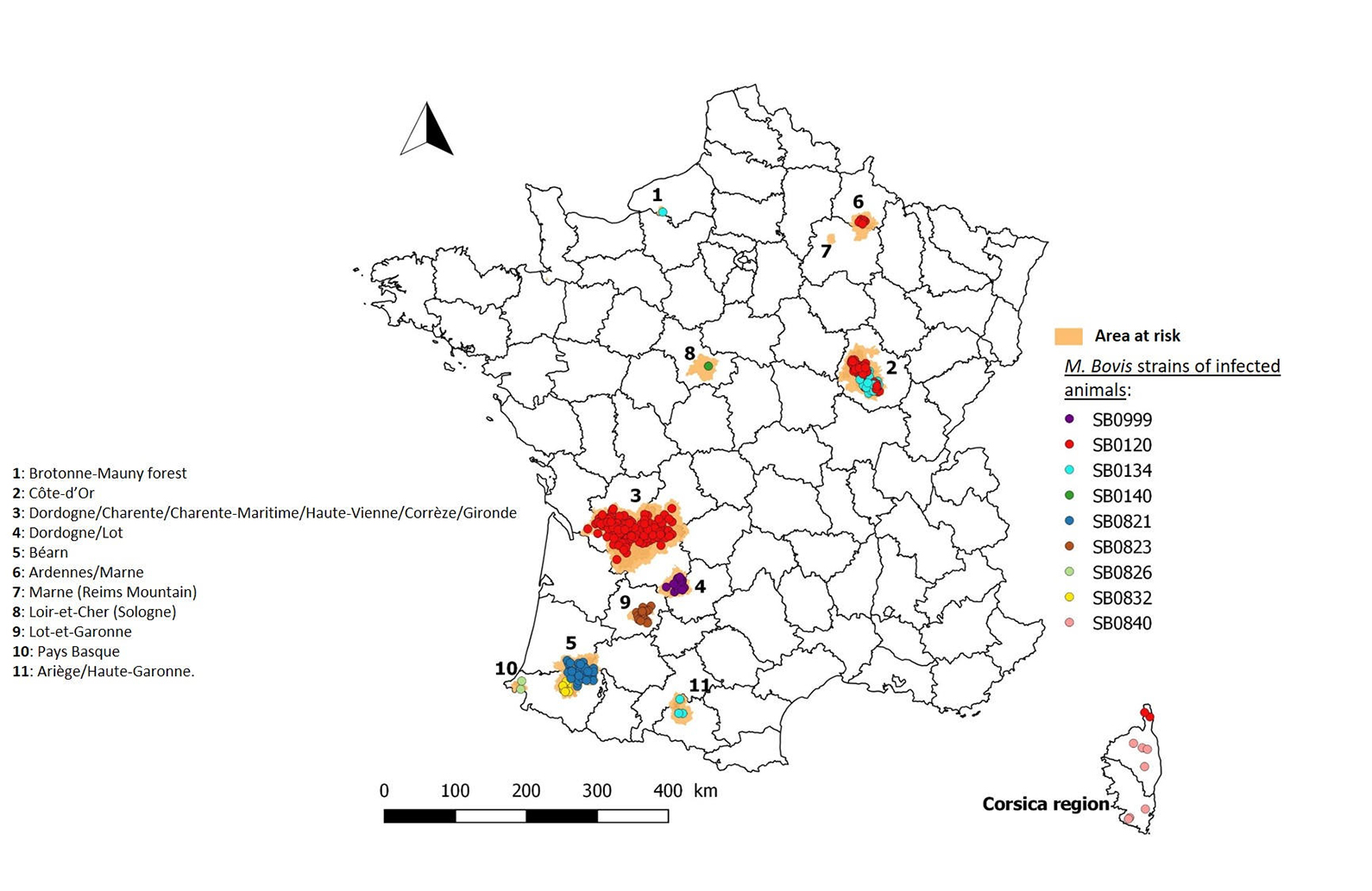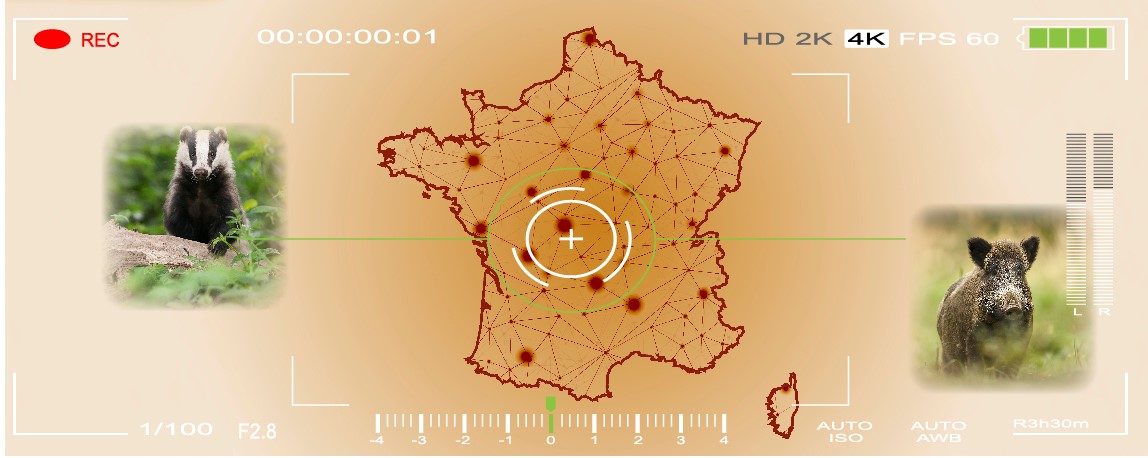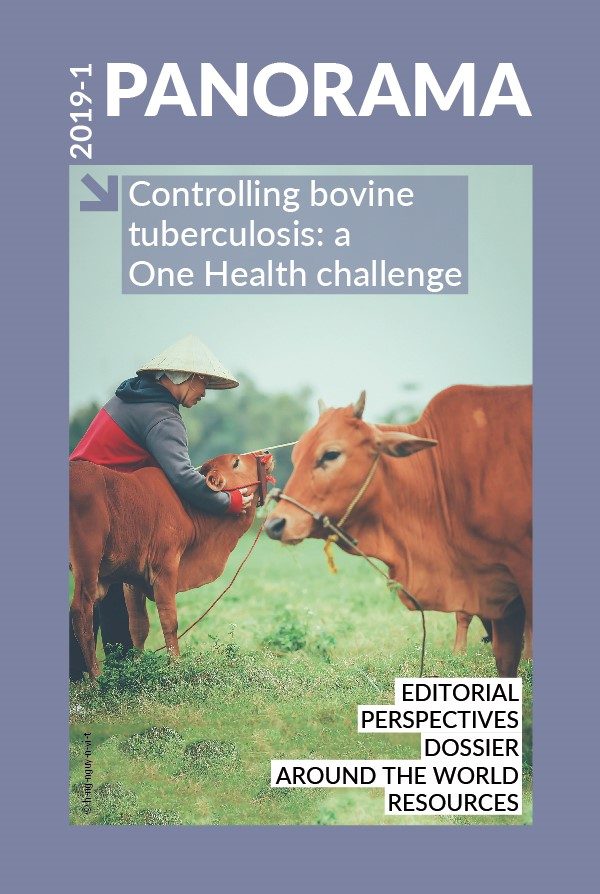Around the world Posted on 2019-05-22 19:03:35
Network initiatives
Mycobacterium bovis infection of wildlife in France
Assessment through a national surveillance system, Sylvatub (Abstract from manuscript)
Keywords
Authors
Édouard Réveillaud(1), Stéphanie Desvaux(2), Maria-Laura Boschiroli(3)*, Jean Hars(2), Éva Faure(4), Alexandre Fediaevsky(5), Lisa Cavalerie(5), Fabrice Chevalier(5), Pierre Jabert(5), Sylvie Poliak(6), Isabelle Tourette(7), Pascal Hendrikx(1) & Céline Richomme(8)
(1) Agence nationale de sécurité sanitaire de l’alimentation, de l’environnement et du travail (ANSES), Unité Coordination et appui de la surveillance, Maisons-Alfort, France. Current address for Édouard Réveillaud: Direction régionale de l’alimentation de Nouvelle-Aquitaine, Limoges, France.
(2) Office national de la chasse et de la faune sauvage (ONCFS), Direction de la recherche et de l’expertise (DRE), Auffargis, France.
(3) Université Paris-Est – ANSES, Laboratoire national de référence pour la tuberculose, Maisons-Alfort, France.
(4) Fédération nationale des chasseurs (FNC), Issy-les-Moulineaux, France.
(5) Direction générale de l’alimentation (DGAL), Bureau de la santé animale, Paris, France.
(6) Association française des directeurs et cadres des laboratoires vétérinaires publics d’analyses (Adilva), Paris, France.
(7) Fédération nationale des groupements de défense sanitaire (GDS France), Paris, France.
(8) Agence nationale de sécurité sanitaire de l’alimentation, de l’environnement et du travail (ANSES), Laboratoire de la rage et de la faune sauvage de Nancy, Malzéville, France.
* Corresponding author: maria-laura.boschiroli@anses.fr
The designations and denominations employed and the presentation of the material in this article do not imply the expression of any opinion whatsoever on the part of the OIE concerning the legal status of any country, territory, city or area or of its authorities, or concerning the delimitation of its frontiers and boundaries.
The views expressed in this article are solely the responsibility of the author(s). The mention of specific companies or products of manufacturers, whether or not these have been patented, does not imply that these have been endorsed or recommended by the OIE in preference to others of a similar nature that are not mentioned.
This surveillance system is known as Sylvatub. The system coordinates the activities of various national and local partners. The main goal of Sylvatub is to detect and monitor M. bovis infection in wildlife through a combination of passive and active surveillance protocols, adapted to the estimated risk level in each part of the country. Event-based surveillance relies on M. bovis identification (molecular detection) in:
a) gross lesions detected in hunter-harvested ungulates
b) ungulates that are found dead or dying
c) road-killed badgers.
Additional targeted surveillance of badgers, wild boar and red deer is carried out on samples from trapped or hunted animals in at-risk areas.
With the exception of one unexplained case in a wild boar, M. bovis infection in free-living wildlife has always been detected in the vicinity of bTB outbreaks in cattle, with the same genotype of the infectious M. bovis strains. Since 2012, M. bovis has been actively monitored in these infected areas and detected mainly in badgers and wild boar, with apparent prevalence rates of 4.57–5.14% and 2.37–3.04%, respectively, depending on the diagnostic test used (culture or polymerase chain reaction), the sample collection period and the area concerned. Sporadic infection has also been detected in red and roe deer.
This surveillance has demonstrated that M. bovis infection in France involves multiple hosts in different areas (Fig. 1), including cattle and wildlife. However, prevalence rates are lower than those observed in badgers in the United Kingdom or in wild boar in Spain.

DOI of the original research article published in Frontiers in Veterinary Science: https://doi.org/10.3389/fvets.2018.00262
References
- Réveillaud É., Desvaux S., Boschiroli M.L., Hars J., Faure É., Fediaevsky A., Cavalerie L., Chevalier F., Jabert P., Poliak S., Tourette I., Hendrikx P. & Richomme C. (2018). – Infection of wildlife by Mycobacterium bovis in France: assessment through a national surveillance system, Sylvatub. Front. Vet. Sci., 5 (Art 262). https://doi.org/10.3389/fvets.2018.00262.












